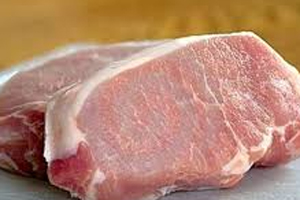Report: The importance of ag exports to US economy

A report released this week by the Joint Economic Committee of the US Congress cites the importance of agriculture – and agricultural exports in particular – to the American economy.
The report, titled “The Economic Contribution of America’s Farmers and the Importance of Agricultural Exports,” notes that the United States is the world’s leading exporter of agricultural products, with a record $141.3 billion exported in 2012 and a $38.5 billion trade surplus for the year for the agriculture sector.
While those totals are impressive, the report also notes that although agriculture has accounted for less than 5 percent of the United States’ gross domestic product (GDP) from 2007 through 2011, agricultural products as a share of total exports hovered around 10 percent.
“Exports are critical to the success of US agriculture, and population and income growth in developing countries ensures that this will continue to be the case in the decades to come,” the report states. “Taking action to facilitate exports would help to strengthen the agricultural sector and promote overall economic growth.”
The report goes on to say that agricultural exporters often encounter trade barriers.
“Despite some progress, average agricultural tariffs remain substantially higher than those imposed on other products,” the report noted. “Moreover, unpredictable and unscientific applications of sanitary and phytosanitary (SPS) measures can create a significant burden for exporters, in particular for producers and processors of meat products.”
According to the report, pressing for lower tariffs on agricultural products – as well as ensuring that SPS measures are not used inappropriately to keep U.S. goods out of overseas markets – would help exporters.
The report recommends actions that Congress can take to facilitate export opportunities for America’s farmers, ranchers and agricultural producers, including:
• Enacting a long-term farm bill to provide a certainty for U.S. agriculture
• Pushing for provisions that reduce barriers to agricultural exports
• Promoting export opportunities for small and beginning farmers, ranchers and processors
The report cites the changing landscape for American agricultural exports over the past 20 years. Two decades ago, just 1 percent of U.S. agricultural export sales went to China. This total increased to 4 percent by 2002 but, by 2012, China was the top destination for U.S. agricultural products, purchasing more than $25 billion in products that accounted for more than 18 percent of total sales.
In 2012, the China/Hong Kong region was the No. 3 market for U.S. pork exports, purchasing 431,145 metric tons (950 million pounds) valued at $886.2 million. China also has rapidly grown into one of the leading global markets for beef, but the country has remained closed to U.S. beef exports since the 2003 BSE finding in the United States.
“This report reinforces the importance of exports for the American agricultural sector,” said Philip Seng, president and CEO of the U.S. Meat Export Federation. “It also documents two areas that are critical for the success of agricultural exports: the enactment of a long-term farm bill to provide support for agricultural exports and provisions that reduce barriers to those exports. Both are equally important for an area of the economy that produces a much-needed budget surplus and supports an estimated one million jobs across the country.”
In 2012, U.S. beef, pork and lamb exports amounted to more than 7.5 billion pounds of product valued at more than $11.8 billion. The export value per head processed amounted to $55.87 for pork and $216.73 for beef.











